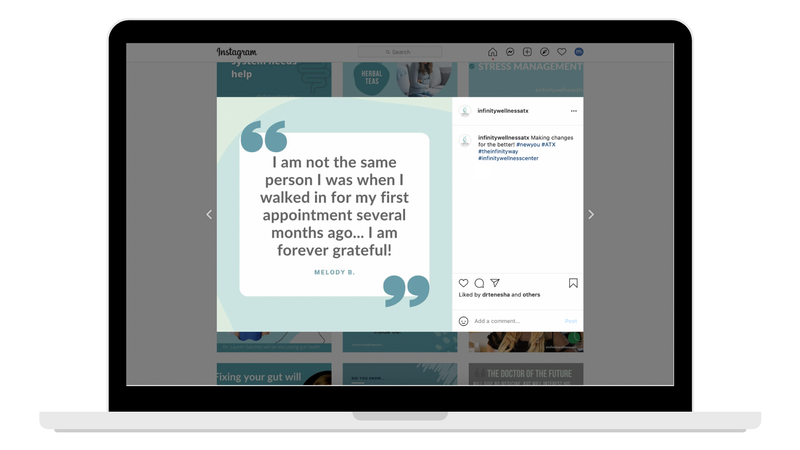Sales Promotions & Storytelling Go Hand-in Hand. Here’s How to Do it Right
Learn how Muse weaves storytelling into messaging. And how you can, too.
Storytelling was the main mode of communication for thousands of years before the dawn of written language. Stories that held cultural beliefs, traditions, and important information had to be engaging to survive from one generation to the next.
Why? Stories turn abstract ideas into information we understand and remember.
Even though we’ve transitioned to a largely digital age (hello, websites & social media!), storytelling reigns supreme as the best way to engage people.
Let’s dive into the world of storytelling and how it will increase value in the minds of your audiences and convince them to buy.
Understand your value proposition.
Before you begin weaving storytelling elements into your content, it’s important to define what makes your business different. A value proposition explains to customers why your business is the clear choice over competitors.
Compelling value propositions use benefits, not features, to hook prospects. A benefits-first approach addresses customers’ pain points and lets them know exactly what problems you’re solving for them. Remember: people buy outcomes, not products.
We helped Infinity Wellness Center do this with website copywriting and social media. We uncovered that many of the Center’s patients experienced a lack of empathy and understanding from conventional medical doctors.
Infinity Wellness Center used this information and made compassion, custom care plans and increased patient communication the base of their practice. In their messaging, prospective patients don’t just read a laundry list of common conditions that the Center resolves. Instead, they hear stories about patient success and the unique aspects of Infinity Wellness Center.

If you already have a value proposition, great! If not, you probably have a general sense of what it is, it just isn’t written yet. Answer the following questions about your business to get the ideas flowing:
- Who is your perfect customer and what do they really want?
- How exactly does your product or service solve customer problems?
- Why do customers choose your business over the competition?
Your answers to these are part of your story. They’re also great springboards for creating story-based content. Read on to learn how.
Weave storytelling into your content
Which message draws you in more?
“Buy our summer yoga package and save big!” or “Feel your shoulders relax and your stress vanish. Your busy life impacts both your body and mind – now, relieve them both. Destress with 10 relaxing yoga sessions this summer.”
If you picked the second one, I would agree with you. The reason most people are drawn in by it is because they can place themselves in the situation. It also markets the solution (relaxation) to a common problem (stress).
Another reason option two hooks readers is because it quantifies the offer. A yoga package could mean many different things: 2, 10, 20 sessions. The reader won’t know unless you tell them. Make sure to include quantifiers whenever possible.
This style of writing can be adapted to any form of copy – social media, web copy, print materials. Storytelling can be woven into any way that you communicate with customers, as long as you make them the center of the story.
Nest, we’ll break down the basic components of great storytelling,
Write the stories your customer want to read
Your customers want to see themselves in your content. Whether they’re reading a tweet, your website or watching a video.
Here’s the basic formula that we use to create storytelling content for our clients that resonates with their customers:
- Hero: Who is at the center of the story?
- Conflict or journey: What do they go through?
- Resolution: How are their problems solved?
You don’t need to be a savvy writer to make this work effectively. All it takes is understanding who your customers are, their pain points and how you remedy them.
For Ohio Apples, we create social content that makes parents heroes in their own lives. Social post copy like, “The moments you'll want to remember forever are fleeting fast. Whether it's your family's first time in the orchard, or you've made it a tradition, photos of smiling faces never get old. Capture their excitement and when you post about your experience at a member orchard, make sure to tag them, us, and use #ohioapples!”
The parent is at the center of the story and the conflict is that kids grow up quickly so it’s important to capture memories while they’re being made. Ohio Apples’ orchards provide the solution by being both the activity that makes the memories and a beautiful backdrop for capturing them on camera.
Now that you’ve learned the basics, you’re probably wondering how to ramp it up a bit. Read on!
Keep readers’ eyeballs glued to your content.
Build on our basic storytelling formula to create selling copy that stands out. Try adding these components to your writing:
- Humor: No one wants to read a boring story! Incorporate humor that your audience understands and appreciates. This may take some time, trial and error to get right.
- Short & sweet: Your audience is busy – distill the most important and entertaining bits of your copy down to increase readability.
- Visuals: Written stories are only one part of the experience – level up your storytelling game with video content, VR/AR experiences or a combination of different media.
Put them all together and you’ll create knock-out messaging that shows audiences you understand their lives. In doing so, they’ll be more likely to trust your brand and, ultimately, buy.
We’ve covered a lot of ground in a short time! When you put your newfound knowledge to good use, we’d love to see it. Share your content with us via social media or email. Until then, happy storytelling!
About the Author
Megan Factor is a Content Manager at Muse and a passionate creator, both professionally and personally. She developed her content marketing skills working in a wide range of industries and pulls inspiration from her diverse experiences. Her keen eye for design, penchant for writing, and love of good storytelling work together to create meaningful content that provides value to clients.
More Good Reads

Modern Wellness Customer Personas: 2024
How to target different wellness motivations of consumers in 2024.

Marketing for Wellness Brands: Learn How to Change Your Audience’s Mindset
Attract more patients with marketing for wellness brands that uses strategies & communication focused on positive change.

